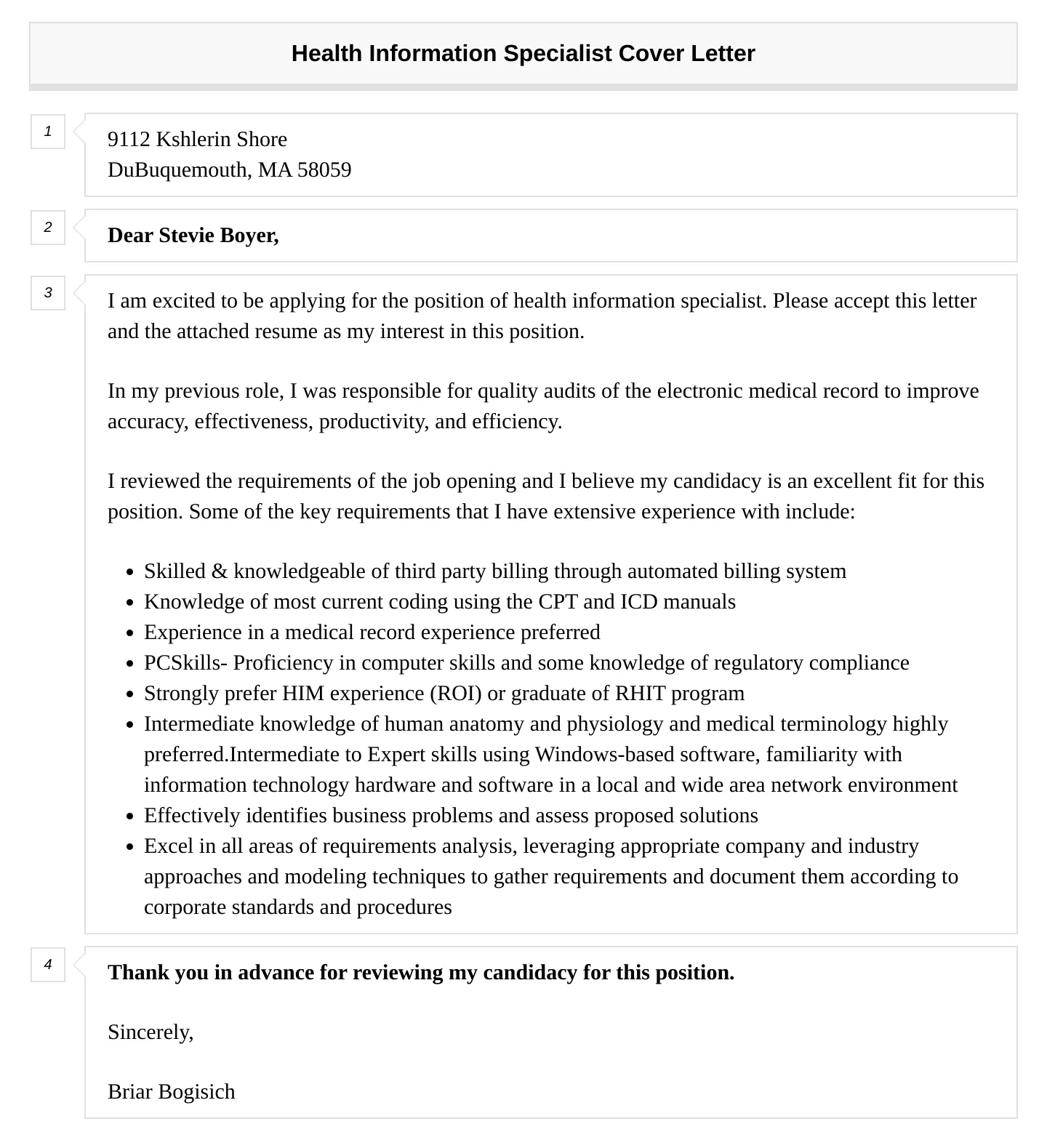Health Information Specialist Cover Letter Essentials
A compelling cover letter is your first opportunity to make a positive impression on a potential employer. For a Health Information Specialist, a well-crafted cover letter can significantly increase your chances of landing an interview. It serves as a crucial introduction to your qualifications, skills, and experience. Unlike a resume, which provides a factual overview, a cover letter allows you to showcase your personality and explain why you are the ideal candidate for the specific role. This guide provides the top tips for creating a cover letter that highlights your strengths and gets you noticed. By following these guidelines, you’ll be able to create a cover letter that effectively communicates your qualifications and demonstrates your genuine interest in the position. The ultimate goal is to persuade the hiring manager to invite you for an interview, giving you the chance to further elaborate on your skills and experience.
Understanding the Purpose of a Cover Letter
The primary purpose of a cover letter is to introduce yourself and express your interest in a specific job. It’s more than just a formality; it’s your chance to provide context to your resume and demonstrate how your skills and experience align with the job requirements. A good cover letter clarifies your career goals and explains why you are a good fit for the company. It should be tailored to each application, showing that you’ve researched the organization and understand their needs. Think of it as your personal sales pitch, highlighting your achievements and explaining why the employer should choose you. Make sure that you clearly state the position you are applying for and where you found the job posting. This helps the hiring manager quickly understand your application and keeps things organized. Your cover letter should also be used to address any gaps or unusual circumstances in your resume, providing a cohesive narrative of your professional journey. It should complement your resume by offering a more detailed explanation of your abilities and aspirations.
Highlighting Your Skills and Experience
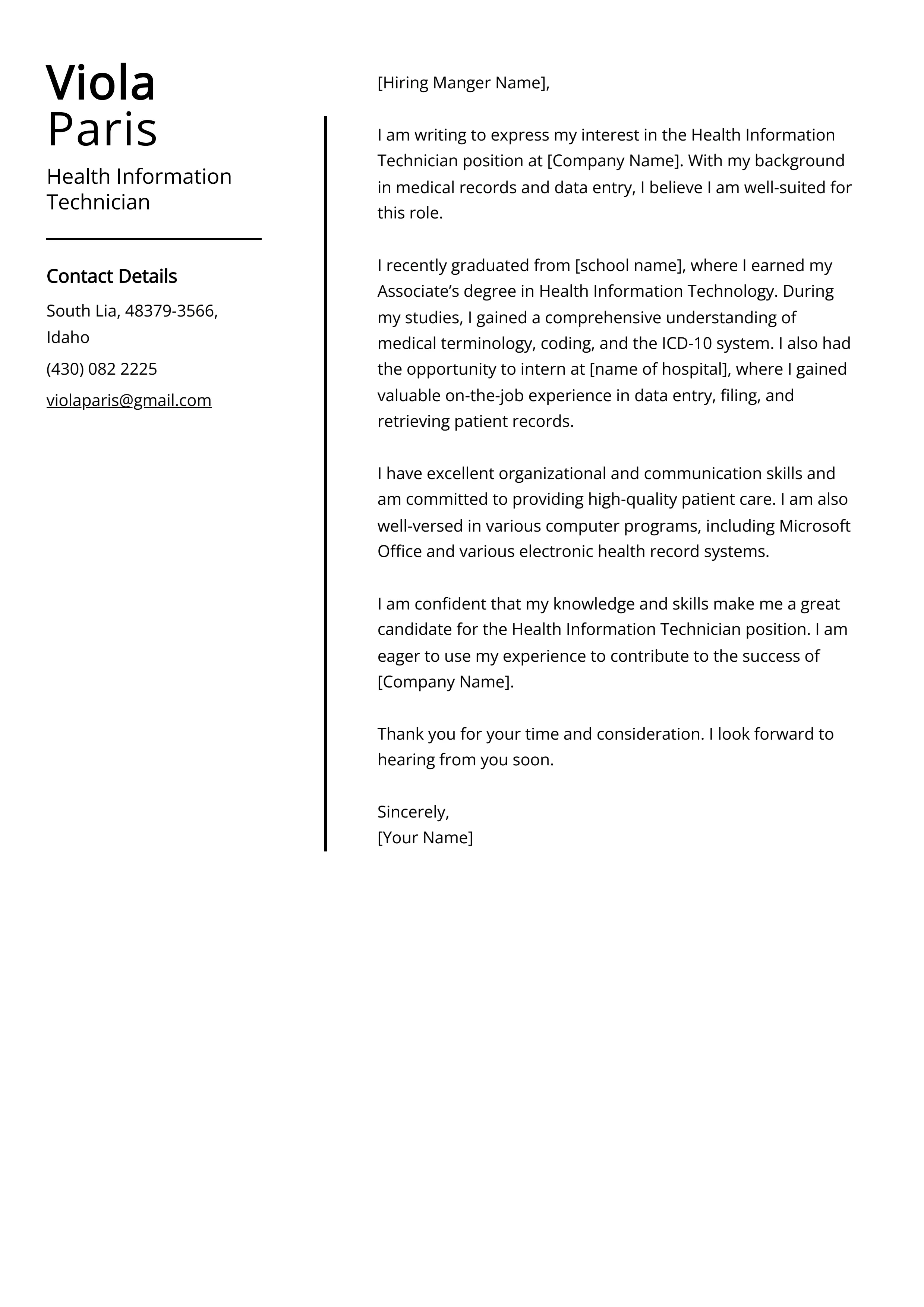
This is where you shine! Your cover letter should spotlight your key skills and relevant experience. Health Information Specialists require a unique blend of technical expertise and interpersonal skills. Focus on the skills most relevant to the job description. Use specific examples to illustrate your achievements. Instead of just listing your duties, quantify your accomplishments whenever possible. Did you improve data accuracy by a certain percentage? Did you streamline any processes that led to efficiency gains? When describing your experience, link it directly to the requirements listed in the job posting. This shows the hiring manager that you understand their needs and can meet their expectations. Furthermore, tailor your examples to show how your past successes can benefit the employer. If you’ve managed medical records, mention the volume or complexity of the records you handled. If you’ve worked with specific software, highlight that expertise. Don’t just tell them what you did; show them what you achieved.
Essential Skills for Health Information Specialists
Several core skills are crucial for success in this role. These include strong organizational skills, attention to detail, and proficiency in health information management systems. Excellent communication skills, both written and verbal, are also vital for interacting with healthcare professionals, patients, and other stakeholders. Additionally, the ability to maintain confidentiality and adhere to ethical standards is paramount. Other important skills include data analysis, coding, and knowledge of medical terminology. Problem-solving abilities and the capacity to work independently and as part of a team are also highly valued. Moreover, proficiency in relevant software, such as electronic health records (EHR) systems, is essential. Demonstrating these skills in your cover letter will make you a strong candidate. In the job description, look for keywords that highlight the skills they are looking for and make sure to include those in your cover letter. Remember to back up each skill with a concrete example from your experience, to further illustrate the impact of your skills.
Relevant Experience to Showcase
Highlight experience that directly aligns with the job requirements. Focus on experiences where you managed medical records, ensured data accuracy, or implemented new information systems. If you have experience with HIPAA regulations, be sure to mention it. Also, include any experience with coding, billing, or insurance processes. If you have worked in a clinical setting, specify the type of healthcare environment. If you have previous experience in a hospital, clinic, or other healthcare setting, mention that experience. Emphasize any leadership roles or projects where you took initiative. Be specific about the tasks you performed and the results you achieved. The more details you can provide, the better. Quantify your achievements whenever possible. For example, mention the number of records you managed or the efficiency gains you achieved through a specific project. The more detailed your examples, the more impressive your cover letter will be.
Formatting Your Health Information Specialist Cover Letter
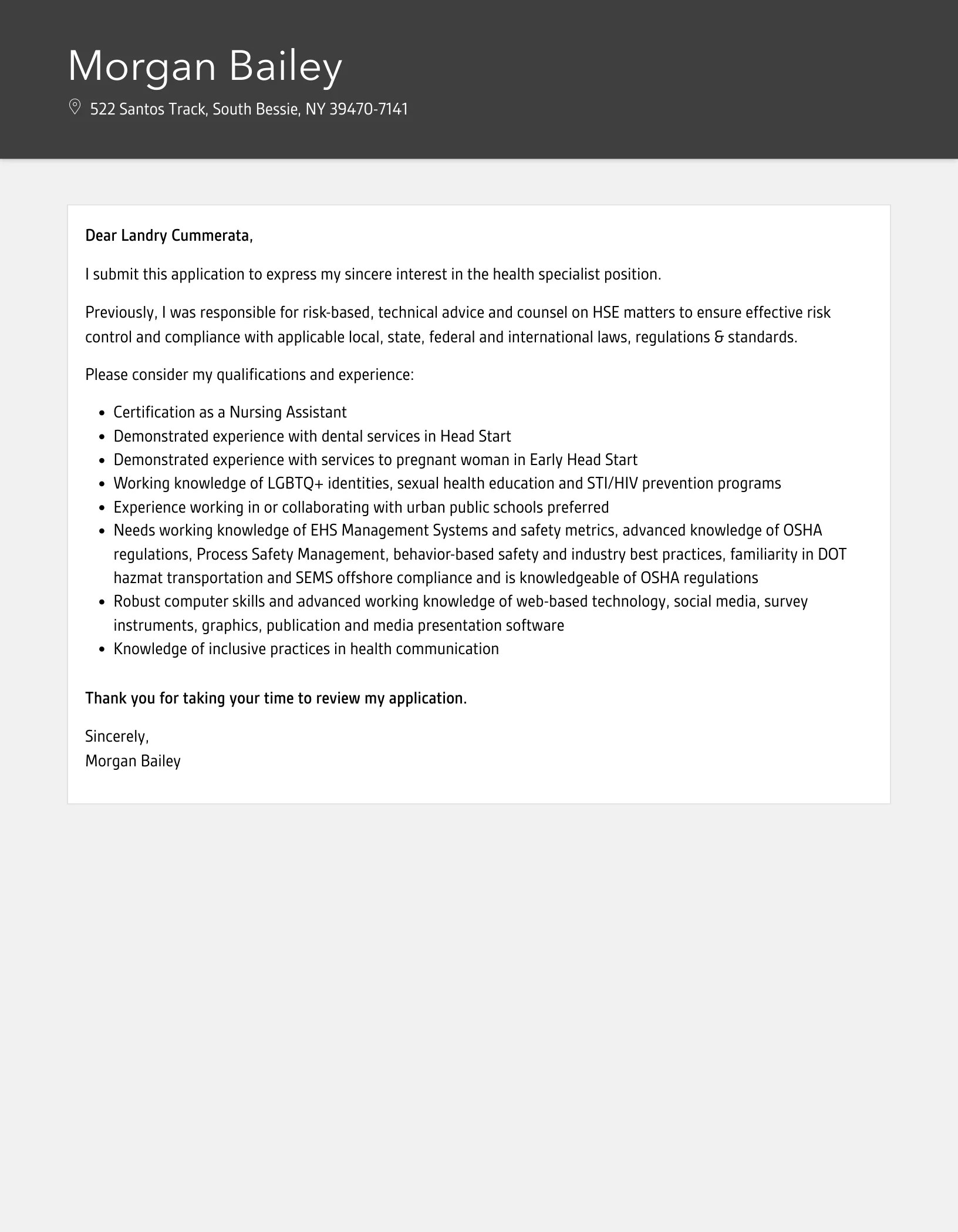
Formatting is crucial for making a good impression. An easy-to-read, well-formatted cover letter shows professionalism and attention to detail. Start with a clear heading that includes your contact information and the date. Then, address the letter to the hiring manager or the appropriate person in the department. Using the correct format also includes choosing a professional font like Times New Roman or Arial, and keeping the font size between 10 and 12 points. Ensure that your letter has consistent spacing and alignment, with adequate margins on all sides. Keep paragraphs concise and easy to read. Use bullet points to highlight key skills or achievements. Avoid using jargon or complex sentence structures. Instead, opt for clear and concise language. By paying attention to these details, you’ll create a cover letter that is both visually appealing and easy to understand. This will ensure that your message is effectively conveyed.
Choosing the Right Tone and Style
Your tone and style should be professional and enthusiastic. Show genuine interest in the position and the organization. Use a formal but friendly tone. Avoid using slang or casual language. Use active voice and avoid passive constructions. Your style should be clear, concise, and to the point. Make sure the tone of your cover letter reflects your personality, while maintaining professionalism. Ensure that your writing is free of grammatical errors and typos. The language should be easy to understand and reflect your attention to detail. Proofread carefully before sending your cover letter. This will make a positive impact, showcasing your capabilities and personality. Tailor your writing style to the specific company culture, if possible, by reading company literature to know their tone and style. Always aim for a positive and confident tone.
Formatting Guidelines
Adhere to standard formatting guidelines. Use a professional font like Times New Roman or Arial, in a size between 10 and 12 points. Ensure your cover letter is single-spaced with a space between each paragraph. Use a standard 1-inch margin on all sides. Left-align your text and avoid justifying it. Include a clear heading with your contact information. Begin with a formal salutation, such as “Dear Mr./Ms. [Last Name]”, or “Dear Hiring Manager” if you don’t know the name. Make sure your letter is no more than one page in length. Break up large blocks of text by using paragraphs and bullet points. Proofread the document carefully to avoid any errors in grammar or spelling. Stick to a consistent format throughout your cover letter.
Key Elements to Include in Your Cover Letter
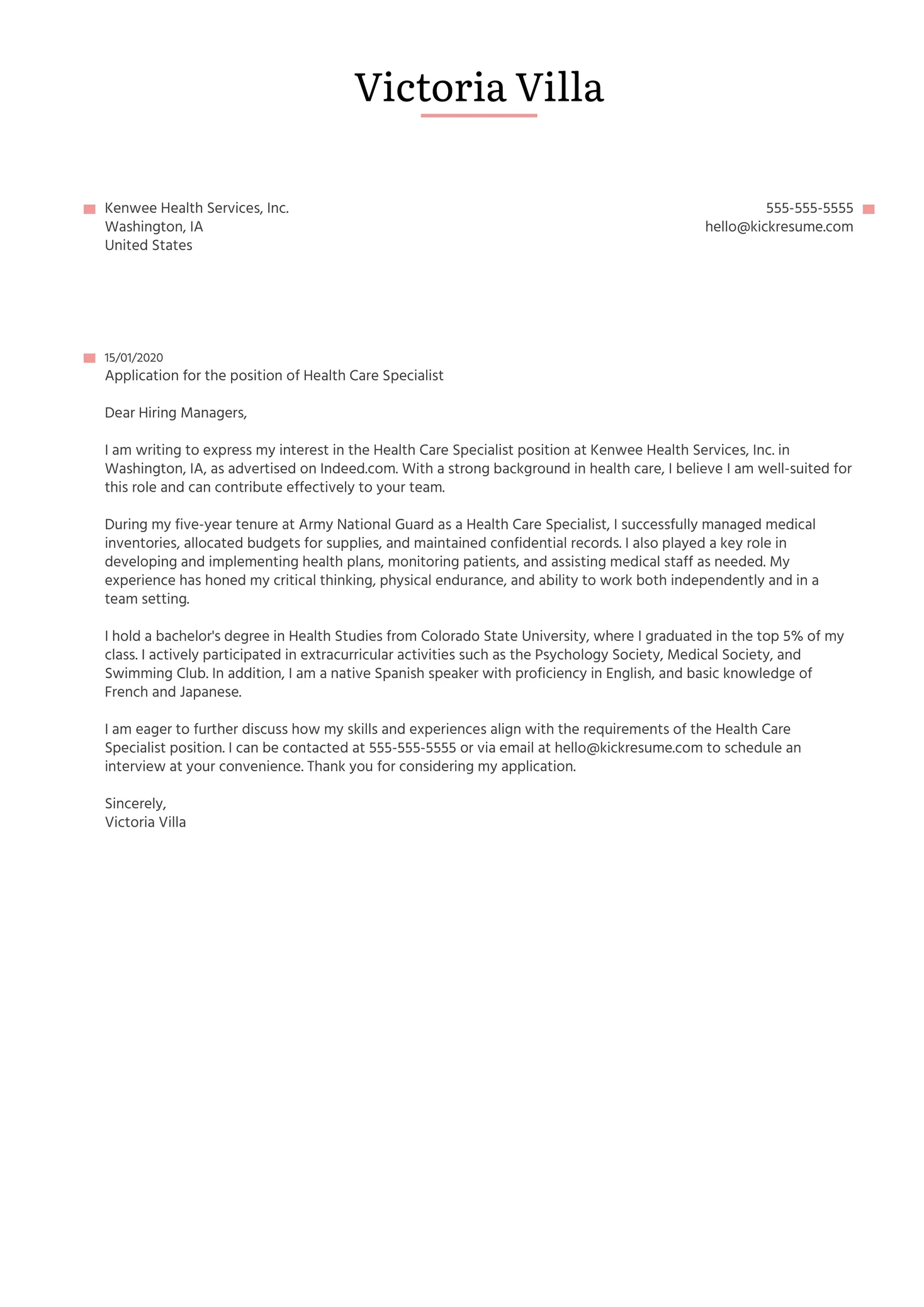
Certain key elements are essential for an effective cover letter. These elements help highlight your qualifications and demonstrate your suitability for the job. These elements are contact information, a professional summary or objective, body paragraphs detailing your qualifications, and a closing paragraph. Each element plays a role in conveying your message clearly and effectively. A well-structured cover letter will capture the hiring manager’s attention and increase your chances of an interview. Your cover letter should introduce you, highlight your key skills, and express your interest in the position. It should complement your resume and persuade the reader that you are the ideal candidate. Including these elements will not only showcase your qualifications but also emphasize your genuine interest in the position.
Contact Information
At the top of your cover letter, include your full name, address, phone number, and email address. Make sure your contact information is accurate and up-to-date. Also, include the date. This information is crucial for the hiring manager to contact you. Ensure that your email address is professional. Avoid using nicknames or informal email addresses. Your contact information should be clearly formatted and easily accessible. This ensures that the hiring manager can reach you without any difficulties. Double-check all details before submitting your application. Making sure your information is correct will give your application a professional touch and improve the chances of a response. Place this information in the top left or right corner of the letter.
Professional Summary or Objective
Start with a brief professional summary or an objective statement. If you have significant experience, a professional summary is often best. It provides a snapshot of your skills and achievements. If you’re just starting out, an objective statement can highlight your career goals. The summary or objective should be concise and tailored to the job. Highlight your key qualifications and express your interest in the role. Make sure to mention your expertise. This statement should be the first thing the hiring manager reads after the salutation. Keep the summary or objective to a few sentences. This part of the cover letter sets the tone for the rest of the document. It should immediately capture the reader’s attention.
Body Paragraphs Detailing Your Qualifications
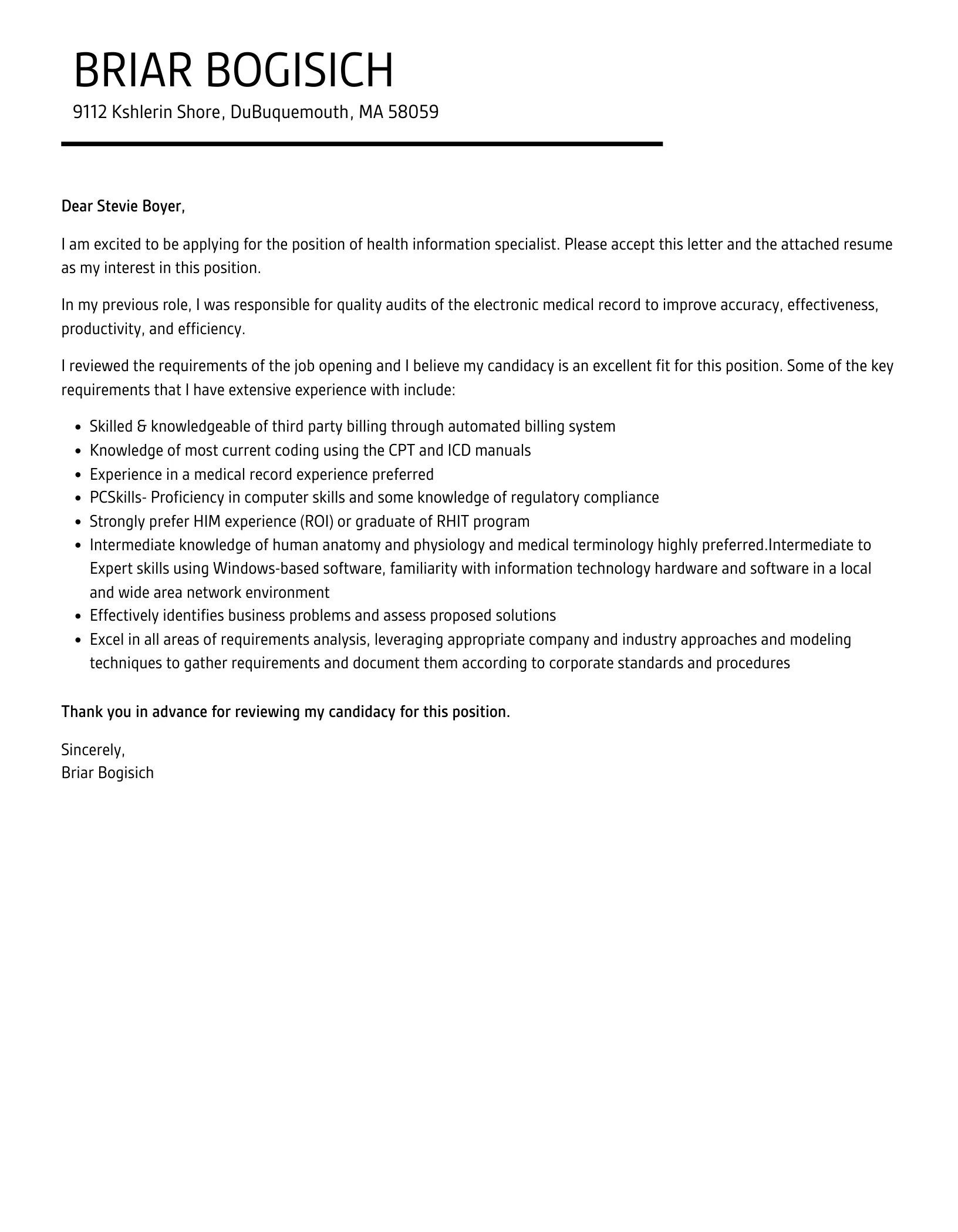
Use the body paragraphs to elaborate on your skills and experience. Address the specific requirements listed in the job description. Provide examples that demonstrate how you’ve met those requirements in the past. Quantify your accomplishments whenever possible. Use the STAR method (Situation, Task, Action, Result) to structure your examples. Explain the situation, the task you undertook, the actions you took, and the results you achieved. Focus on your achievements and how they benefited previous employers. Keep each paragraph concise and focused on a single point. Use strong action verbs to describe your accomplishments. Connect your skills and experiences directly to the job’s needs. This shows the hiring manager that you are a good fit. Use the body paragraphs to create a narrative about your professional journey.
Closing the Cover Letter
Your closing paragraph should restate your interest and thank the hiring manager for their time. Express your enthusiasm for the position and the company. Reiterate your key qualifications and how you can contribute to the team. Include a call to action, such as requesting an interview. Provide your contact information again. End with a professional closing, such as “Sincerely” or “Best regards.” Ensure that your closing is polite and professional. Proofread this section carefully to make sure there are no errors. Make sure to express your anticipation to hear from them soon. This final paragraph is your last chance to impress the hiring manager.
Proofreading and Editing Your Cover Letter
Proofreading and editing are essential steps in the process. Errors in your cover letter can undermine your credibility. Take the time to thoroughly review your cover letter for any mistakes. Proofread for grammar, spelling, and punctuation errors. Ensure that your writing is clear and concise. Check the formatting and ensure consistency throughout the document. Ask a friend, family member, or career counselor to review your cover letter. A fresh pair of eyes can often catch errors that you might miss. Make sure all the details are correct, from the contact information to the company’s name. This shows your attention to detail and professionalism. Thorough proofreading is critical to a successful job application.
Common Mistakes to Avoid
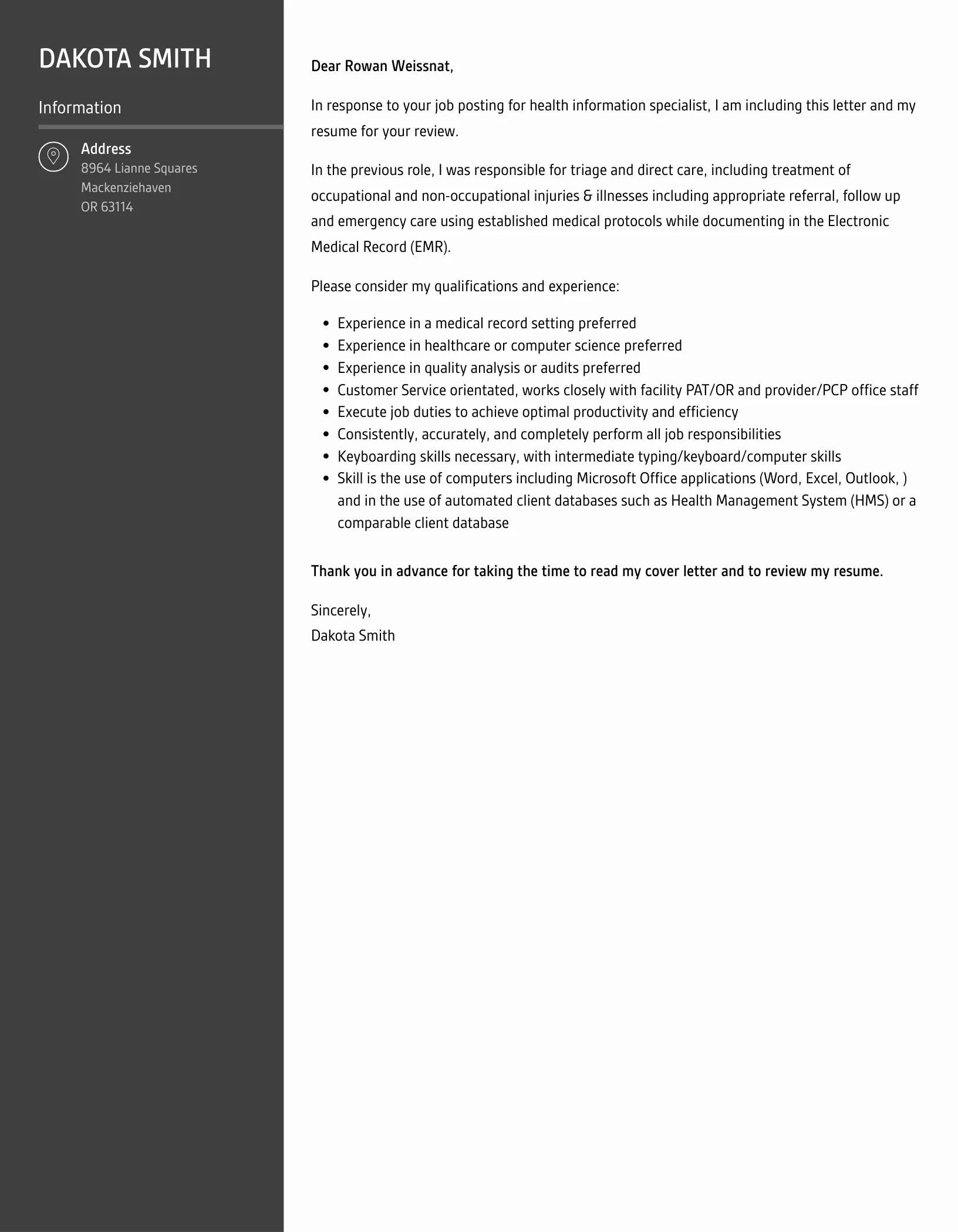
There are several common mistakes to avoid when writing a cover letter. One mistake is using a generic cover letter. Always tailor your letter to the specific job and company. Avoid grammatical errors and typos, which can damage your credibility. Do not exceed the one-page limit. Make sure your letter is concise and easy to read. Another mistake is not proofreading your cover letter. Always review your work before submitting it. Avoid using jargon or overly complex language. Use clear and simple language. Do not focus on what you want; focus on what you can offer the employer. Also, don’t include negative information about your past employers. Steer clear of mentioning salary expectations unless specifically requested. Avoid these common pitfalls to create a polished, effective cover letter.
Tips for Effective Proofreading
Effective proofreading is crucial. Read your cover letter slowly and carefully, preferably aloud. Use a spell checker and grammar checker, but don’t rely on them completely. They may miss subtle errors. Set the document aside for a day or two before proofreading. This will allow you to view it with fresh eyes. Read the document backward, which can help you focus on individual words and catch errors. Check for consistency in formatting, font, and style. Review the contact information and ensure it is accurate. Ask a friend or colleague to read your cover letter. They may spot errors that you have missed. By following these tips, you can create a cover letter that is free of errors and presents you in the best possible light. This will make a good impression, and increase your chances of landing an interview. Proofreading is a fundamental part of a successful job application.
